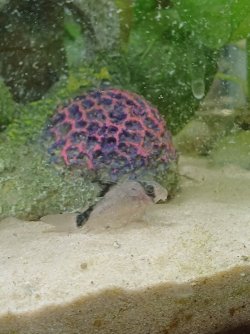What medication did you order?
Most are poisonous to scaleless fish like catfish and need to be used at a lower dose rate.
If the fish are rubbing on objects, they probably have an external protozoan infection like Costia, Chilodonella or Trichodina. These cause cream or white patches of excess mucous on part/s of the body and the fish rub on things. You can treat it with salt.
White spot and velvet are also external protozoan parasites but they show up as small white dots (white spot) or a yellow/ gold sheen (velvet). The fish don't normally produce excess mucous when they have these infections. Heat (30C/ 86F) for 2 weeks usually treats these two diseases without the need for medication.
Your fish has excess mucous and if it's rubbing on things in the tank, and the water quality is good, then it's most likely an external protozoan infection and salt would be my first choice of treatment.
Most are poisonous to scaleless fish like catfish and need to be used at a lower dose rate.
If the fish are rubbing on objects, they probably have an external protozoan infection like Costia, Chilodonella or Trichodina. These cause cream or white patches of excess mucous on part/s of the body and the fish rub on things. You can treat it with salt.
White spot and velvet are also external protozoan parasites but they show up as small white dots (white spot) or a yellow/ gold sheen (velvet). The fish don't normally produce excess mucous when they have these infections. Heat (30C/ 86F) for 2 weeks usually treats these two diseases without the need for medication.
Your fish has excess mucous and if it's rubbing on things in the tank, and the water quality is good, then it's most likely an external protozoan infection and salt would be my first choice of treatment.


